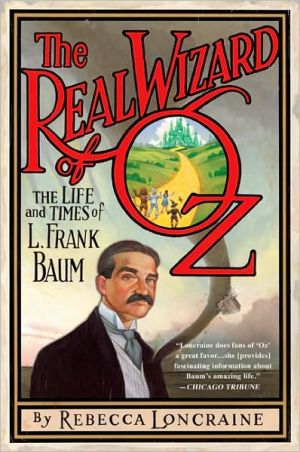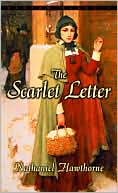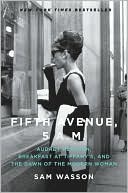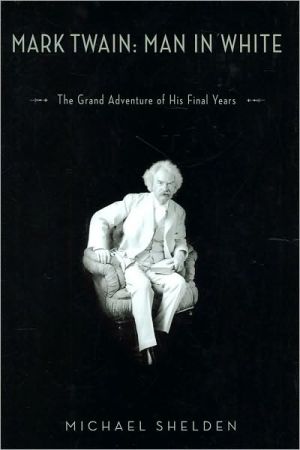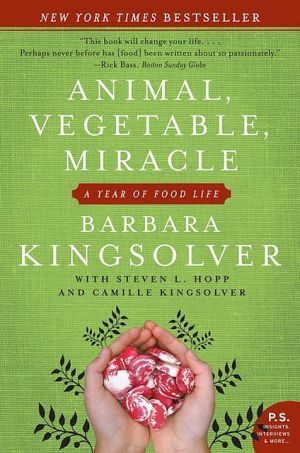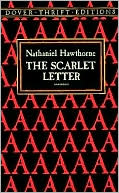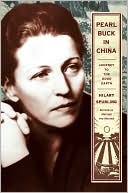The Real Wizard of Oz: The Life and Times of L. Frank Baum
The Real Wizard of Oz is an imaginatively written work that stretches the genre of biography and enriches our understanding of modern fairy tales. L. Frank Baum, author of The Wonderful Wizard of Oz and its thirteen sequels, lived during eventful times in American history (from 1856 to 1919) that influenced nearly every aspect of his writing, from the Civil War to Hollywood-which was emerging as a modern "Emerald City" full of broken dreams and humbug wizards-to the gulf between America's...
Search in google:
In the first major literary biography of L. Frank Baum, Rebecca Loncraine tells the story of Oz as you've never heard it, with a look behind the curtain at the vivid life and eccentric imagination of its creator.L. Frank Baum wrote The Wonderful Wizard of Oz in 1899 and it was first published in 1900. A runaway hit, it was soon recognized as America's first modern fairy tale. Baum's life story, like the fictional world he created, is uniquely American, rooted in the transforming historical changes of his times. Baum was a complex and eccentric man who could never stay put for long; his restless creative spirit and voracious appetite for new projects led him across the U.S. during his lifetime, and he drew energy and inspiration from each new dramatic landscape he encountered,. Born in 1856, Baum spent his youth in the Finger Lakes region of New York as amputee soldiers returned from the Civil War; childhood mortality was also commonplace, blurring the lines between the living and the dead, and making room in Baum's young imagination for vividly real ghosts. When Baum was growing up, P. T. Barnum ruled the minds of small towns and his traveling circus was the most famous act around. Baum married a headstrong young woman named Maud Gage and they ventured out west to Dakota Territory, where they faced violent tornadoes, Ghost Dancing tribes and desperate droughts, before trading the hardships on the Great Plains for the excitement of Chicago and the fantastical White City of the World's Fair.Baum's writing tapped into an inner world that blurred his own sense of reality and fantasy. The Land of Oz, which Baum believed he had "discovered" rather than invented, grew into something far bigger and more popular than he'd ever imagined. After the roaring success of The Wonderful Wizard of Oz in 1900, he became a kind of slave to his creation, trapped inside Oz as his army of demanding child fans kept sending him back there to create new adventures for Dorothy, Toto and the humbug wizard. He went on to write thirteen sequels to his first Oz book. He also wrote the first Broadway adaptations of his Oz tales, and turned his Oz books into some of the first motion pictures in a small and undiscovered rural settlement called "Hollywood". Baum co-founded the Oz Film Manufacturing Company, even as critics warned that no one would pay to see a children's story. And they were right- his early ventures were box office flops and the world was not ready for Oz on screen until 1939, when MGM released "The Wizard of Oz" in brilliant Technicolor. Baum was not around to see it-he'd died in bed in 1919 just weeks after completing his final Oz book. But the book and film alike have become classics, just as well-loved today as they were when they first appeared. The Real Wizard of Oz is an imaginatively written work that stretches the genre of biography and enriches our understanding of modern fairytales. L. Frank Baum, author of The Wonderful Wizard of Oz and its thirteen sequels, lived during eventful times in American history— from 1856 to 1919— that influenced nearly every aspect of his writing, from the Civil War to Hollywood, which was emerging as a modern Emerald City full of broken dreams and humbug wizards, to the gulf between America's prairie heartland, with its wild tornadoes, and its cities teeming with "Tin Man" factory workers. This is a colorful portrait of one man's vivid and eccentric imagination and the world that shaped it. Baum's famous fairytale is filled with the pain of the economic uncertainties of the Gilded Age and with a yearning for real change, ideas which many contemporary Americans will recognize. The Wizard of Oz continues to fascinate and influence us because it explores universal themes of longing for a better world, homesickness and finding inner strength amid the storms.The New York Times - Janet Maslin…[Loncraine] does a solid job of connecting dots between Baum's life and his inventions
Imagining October 9, 1899\ A quick, cold wind swept across the vast and rippling waters of Lake Michigan, whose silver, mirrored surface reflected the fast-moving dark clouds above. The wind reached the shore, shouldered into the streets of Chicago, and picked up and whistled around the edge of a big wooden house on the corner of Humboldt Park Boulevard. It crept in through tiny cracks in the walls and through the hair-thin spaces where windowpanes met; it circled Frank Baum as he sat in his leather upholstered chair in his cluttered study. Wisps of his cigar smoke got caught up in the draft and swirled in gray and white spiraling patterns around his head before dispersing throughout the room. They pushed upstairs through the patterned rugs and pine floorboards to where Maud was asleep in her bed. The familiar smell of her husband’s cigars mingled with her breath as she slept, telling her that he was still working.\ By the glowing light of the kerosene lamp and the pulsating shadows it cast around the room, Baum tore a fresh piece of paper from his notebook and scribbled, “With This Pencil, I wrote the MS of The Emerald City.” Then he dated it: October 9, 1899, and signed it, underlining “The Emerald City” with a strong, thick line. He knew that this moment, in the middle of his life (he was forty-three), needed to be marked; he had finally brought Dorothy home to Kansas by clicking the heels of her magic shoes together. He captured the moment by sticking what remained of the worn-down stub to the paper. This pencil would write nothing more.\ Having signed his name, he returned, fully, to the room, to the golden light and the wind that shook the trees down the boulevard. He crept upstairs to bed, knowing absolutely that he had produced his best work, in his own words, his “most truthful tale.” As he sank into sleep, slipping beneath the surface of the waking lake, he might have reflected on where the idea for this story had come from and where he had come from.\ To find the source of Baum’s famous story, which would later be retitled The Wonderful Wizard of Oz, it’s necessary to travel east from Lake Michigan, 650 miles, crossing the St. Joseph River, moving through Indiana, Ohio, Pennsylvania, passing Lake Erie and the gigantic body of falling water at Niagara, and continuing on into the wooded valleys and lakelands of upstate New York, and finally to the shores of Oneida Lake. This was the world into which Baum was born forty-three years earlier, in 1856. This place had imprinted on him powerful memories, indentations, markings, and scars that had resurfaced in adulthood in this new tale, as though in making it up he had retold his own life story, transformed into a tale from a strange elsewhere.\ Part I\ in the palm of the finger lakes\ 1848 to 1888\ Chapter 1\ Hemlock, Canadice, Keuka, Seneca, Cayuga, Otisco, and Cazenovia. Sounding like a magic spell, these are the names of the Finger Lakes. The long, thin lakes spread out like the digits of an outstretched hand reaching across upstate New York. If the region above these liquid fingers is an open palm, the cities of Rochester and Syracuse are at either end of the lifeline that cuts across it. The Erie Canal, in fact, stretches between Rochester and Syracuse exactly where this imaginary lifeline creases through the geographical palm of the Finger Lakes.\ In the spring of 1848, an old wooden farmhouse in the village of Hydesville, on the outskirts of Rochester, began to speak. Its language was a code of rapping, thumping, knocks, and scraping. After several sleepless nights of bravely searching the house by candlelight for the source of the persistent noises, the Fox family was exhausted. The frightened daughters, Kate, eleven, and Maggie, fourteen, were sleeping in their parents’ bedroom. The sounds had become so loud that the children and their mother, Margaret, and father, John, could feel jarring vibrations coming through the floor and furniture to ripple through their bones.\ On the night of March 31, the family went to bed early, hoping to catch up on some lost sleep. In the half-light, as they climbed into bed, the noises struck up once again, tapping and rapping sounds filling the house, echoing back and forth between the wooden walls. In a strange and courageous act of imitation, the two girls began to copy the odd sounds by snapping their fingers, as though they too should echo like the noises that surrounded them. Then, turning the tables, Kate suddenly challenged the “noisemaker.” “Do as I do,” she shouted, clapping her hands. The house, or the spirit trapped inside it, immediately responded with the same number of raps. The rest of the family took their lead from Kate and addressed what they now assumed was a ghost. Margaret Fox asked the noisemaker to tap out the ages of her seven children. “Instantly,” she said in the signed affidavit in which the details of the night’s events were recorded, “each one of my children’s ages was given correctly, pausing between them sufficiently long to individualize them.” The youngest Fox child had died at age three, and the invisible presence left a longer pause before thumping out the final three raps. The spirit fell silent after announcing the Fox child who dwelled in the same murky region beyond life; as twilight melted into the darkness that evening, the boundary between the living and the dead became blurred.\ John and Margaret Fox gathered their neighbors, and soon the house was filled with jostling bodies. They addressed the spirit, asking it to rap twice if the answer to a question was yes. One neighbor suggested establishing a code with the spirit, whereby someone slowly recited the letters of the alphabet, and the spirit rapped when it heard the letter it required. In this way, they discovered that the restless spirit was that of a thirty-one-year-old peddler who had been murdered in the house five years earlier, his throat cut with a knife and his body buried ten feet below the ground in the cellar. The spirit was also able to spell out his name, Charles B. Rosna.\ Word spread that Margaret Fox’s hair suddenly turned white that night, as though all the color had been sucked out of it.\ The Fox girls were removed from the house. Kate was taken to their brother David’s house in Auburn, Maggie to their sister Leah’s in Rochester. Immediately the rapping sounds began to be heard in the two houses where the girls were staying. It became clear that this sudden outbreak of spirit activity wasn’t simply the manifestation of a lone spirit trapped in the wooden house in Hydesville; it was the Fox sisters who had unleashed it. The children seemed to be mediums between the living and the dead.\ On April Fool’s Day, John Fox and some neighbors began digging up the cellar floor of the farmhouse in Hydesville, looking for some concrete evidence that the spirit was speaking the truth. At five feet down, they reached water and were unable to dig any farther. In the summer of 1848, the Foxes returned to the cellar to dig deeper into the ground. The five-foot hole was dug to ten feet, and there, packed in amongst the mud and grit, human teeth, bone, and hair were discovered. This unearthing didn’t quite confirm the spirit’s story that his whole body was buried there, but it didn’t totally discredit it either. People gathered around Kate and Maggie Fox in a hall in Rochester to discuss the authenticity of the children’s ability to conjure spirits and communicate with them in code. Three groups of citizens investigated the claims and all concluded that the sounds heard in dark rooms and creaking houses in the presence of the Fox sisters weren’t produced by ventriloquism, machinery, or tricks. The Foxes’ careers as the nineteenth century’s first and most infamous spirit mediums had begun.\ That summer of 1848, the border between the living and the dead seemed to have thinned in Hydesville, and fifty miles away along the Erie Canal, in a village near Syracuse, other children were edging toward that porous boundary. Cynthia and Benjamin Baum, who would become L. Frank Baum’s mother and father in 1856, had four children at this time: Cynthia-Jane, age five; Oliver, four; Harriet, two; and Mary-Louise, a twomonth- old baby. In early June, Cynthia-Jane came down with a fever. She began coughing and crying and her breathing became hoarse. Cynthia Baum would have frantically tried to balance nursing baby Mary-Louise with the different kind of nursing required for a very sick child. Mucus poured from Cynthia-Jane’s nose, and her pulse raced.\ In the mid-nineteenth century, diphtheria wasn’t fully understood. It remained almost untreatable until the early twentieth century when an antitoxin was finally developed. People did know, however, that illness could be transferred between bodies in close proximity. The Baums must have tried to keep Cynthia-Jane away from the other children, but the bacteria that cause diphtheria can be spread in tiny droplets from coughs and sneezes. Sometime toward the end of June, Oliver began to show similar symptoms. The horrible rasping sound of a child with diphtheria struggling for breath was unbearable. Despite all attempts to save her, Cynthia-Jane died on June 27, 1848. The cause of death was given as “putrid throat.” Cynthia-Jane’s little dead body would have been washed and dressed in her best clothes, and her hair was likely washed and combed. It was common practice for corpses, even of children, to be put on display for distressed mourners to see. The small stiff body would probably have been laid out in an open coffin, small bouquets of flowers and herbs placed carefully in the pale hands and around the head.\ And Oliver’s condition worsened. It’s almost impossible to imagine the turmoil Cynthia and Benjamin Baum must have felt in the days immediately after the death of their firstborn, as they reeled between grief for their dead daughter and desperate attempts to save Oliver. Thirteen days after Cynthia- Jane died, Oliver followed her.\ During this time, diphtheria commonly struck children in ferocious waves across the population. There’s evidence of an epidemic in New York State in 1848, and the Baums weren’t the only family to lose children. The Lammerts, Meads, Fisks, Schoonmakers, Phillips, Taylors, and McGarrows all lost children under the age of five that summer. The distraught Baums buried their children in a small local cemetery, probably by a preacher all too familiar with the sight of grieving parents bent in pain over the graves of their infants.\ These two dead children remained very important in the Baum family. Many years later, in 1877, Benjamin Baum bought a family plot in the grand Oakwood Cemetery on a hill overlooking Syracuse. Heavy stone blocks with the children’s names chiseled in bold lettering were placed on the plot as memory markers if the small bodies weren’t disinterred and reburied beneath them. These stone markers were the same size as those of other Baums who lived on into adulthood, whose bodies would eventually be placed beside them. There were plenty of other infant graves amid the clover and moss in the plots of Oakwood Cemetery, but they were rarely given equal status with those of other family members who lived on into old age. Cynthia-Jane and Oliver may have died in 1848, but they clearly lived on in the collective memory of the Baum family, continuing a kind of shadow life alongside their living siblings.\ In mid-nineteenth-century America, at times up to forty percent of all deaths were of children under age five. The Baums had, until 1848, been lucky. All of their children had lived, and Cynthia-Jane had been nearly out of the most vulnerable age range when she was taken. Infancy was a time of acute vulnerability; like old age, early childhood was lived in intimate proximity to death.\ But for the Baums and other families like them, this was an era in which the acute pain that all parents must feel at losing a child took on a new shading. In the eighteenth and early nineteenth centuries, most people had held God responsible for the high infant mortality rate. If God had freely given, so people believed, He could just as freely take away. There was nothing parents or anyone could do except bend to the mysterious will of God and seek his comfort in their grief. But by the mid-nineteenth century, advances in medicine had introduced a key element of human agency into the survival of children. Diseases were better understood and cures were being developed. People began to believe that they might be able to protect their infants. But in reality, access to sophisticated medical care still wasn’t widespread enough to save children, and they continued to die.\ Nevertheless, beliefs had shifted. Now that infant mortality wasn’t God’s will, it was believed to be the failure of doctors, of parents, and of mothers in particular to care for their children. “No one can for a moment believe,” wrote the author of a popular nineteenth-century home medical guide, “that the excessive and increasing infant mortality among us, is part of the established order of nature, or the systematic arrangement of Divine Providence.” Cynthia Baum clung to her Methodist religion, committing herself to a God who might bear some responsibility for the deaths of her children, or at least forgive her for failing to save them.\ Many people also had to contend with old superstitions about infant mortality, brought to America by Europeans who had carried their folklore with them across the Atlantic. In the nineteenth century, many people still believed in fairies, but these creatures weren’t the harmless little winged pixies we have come to think of as “fairies.” They could be ugly and mean and were sometimes indistinguishable from ghosts. Some believed that infants and the unborn were vulnerable to baby-snatching fairies, which were imagined as the bitter and twisted souls of babies who had died or been stillborn, or of women who had died in childbirth.\ The strange happenings in 1848 in the Fox house in Hydesville suggested that living children could communicate with the dead. Kate and Maggie Fox had discovered a talent that would shape not only the rest of their lives but the entire culture of the late nineteenth century. The sisters could communicate with the dead, and once their story spread, little girls and supernatural activity would be forever linked in the popular imagination, where ghosts and fairies had existed for generations.
Family Tree xIntroduction: On Telling the Life Story of a Storyteller xiiiImagining October 9, 1899 1Part I In the Palm of the Finger Lakes, 1848 to 1888Chapter 1 5Chapter 2 10Chapter 3 18Chapter 4 27Chapter 5 38Chapter 6 47Chapter 7 58Chapter 8 70Part II The Great Plains, 1888 to 1891Chapter 9 81Chapter 10 93Chapter 11 100Chapter 12 109Chapter 13 117Part III Crossing Lake Michigan, 1891 to 1903Chapter 14 133Chapter 15 147Chapter 16 160Chapter 17 171Chapter 18 186Part IV Living Between Landscapes, 1903 to 1910Chapter 19 203Chapter 20 215Chapter 21 223Chapter 22 229Part V Hollywood, 1910 to 1919Chapter 23 243Chapter 24 256Chapter 25 266The Afterlife, 1919 to 1939 279Acknowledgments 291Notes on Sources 295A Selected Bibliography of Works by L. Frank Baum 301Selected Bibliography 307Index 317
\ Janet Maslin…[Loncraine] does a solid job of connecting dots between Baum's life and his inventions\ —The New York Times\ \ \ \ \ Publishers WeeklyIn this literary biography of a too-often overlooked pioneer of 20th century children's fiction, first-time author Loncraine examines the life and prolific career of Oz series creator L. Frank Baum. Divided into five sections, corresponding to the five U.S. regions in which he lived, U.K. journalist Loncraine seeks to enshrine Baum as America's Grimm Brother, as devoted to his native land as he is to his fantasy world. The most interesting sections cover his childhood in the Finger Lakes region of New York and his life as a storekeeper and newspaper publisher in the Great Plains. Loncraine's rich material includes the ideas and folktales populating each region-ghosts and mysticism, poverty and desire, and others-but, unfortunately, her determination to give equal attention to each area of Baum's life short-changes Baum's interpersonal relationships, as well as the ties between his life and his work. Too often, Loncraine notes these connections but fails to dig into them, including what may have been the most fascinating part of Baum's tale, his decades-long marriage to a suffragist who was in every way his equal. Though this biography should intrigue Oz fans, it's hardly the final word. \ Copyright © Reed Business Information, a division of Reed Elsevier Inc. All rights reserved.\ \ \ Kirkus ReviewsAn enthusiastic biography of the creator of Oz falls victim to questionable psychologizing and incomplete follow-through. Lyman Frank Baum (1856-1919) was born near Syracuse, N.Y., in the middle of a diphtheria epidemic. Thus, argues British journalist Loncraine, a preoccupation with death hung over Baum's childhood, compounded by the casualties of the Civil War. He nevertheless was a lively, entrepreneurial lad who wrote and printed amateur journals on a child's printing press and later took on printing jobs for local businesses. Loncraine mines Baum's youth for foreshadowing details-scarecrow nightmares, the yellow-hued Plank Road, a local balloonist's antics. She also indulges in irresponsible speculation, mentioning that Baum's father "may have" had the bodies of his four dead children disinterred and reburied. "If so, the process must have disinterred the infants in the family memory as well, and affirmed the ghostly presence of Baum's shadow siblings." Baum's restlessness and enthusiasm took him through several endeavors-in the theater, as a shopkeeper, journalist and traveling salesman-and to the Dakota plains before he hit it big with children's books after moving to Chicago. The narrative finally comes alive in the chronicle of his career, particularly the Oz books, which made him rich and then sustained him after he bankrupted himself trying to turn his creations into films (the crushing irony is gently noted). Having devoted nearly half of the book to the lead-up to his writing and particularly his purported preoccupation with child mortality, however, there is little payoff in the brief analyses of his prodigious output. Although Loncraine turns a few graceful phrases("stories were a mixture of pure invention and ideas gathered from the cultural soup that sloshed around the author"), too often she resorts to clunky similes for effect: "He was cracking up, like a muddy hole covered in ice run over and shattered by a wagon wheel."A flawed portrait that won't replace either Michael Patrick Hearn's The Annotated Wizard of Oz (1976) or Katharine M. Rogers's L. Frank Baum: Creator of Oz (2002) as authoritative works of Baum scholarship. Agent: Zoe Pagnamenta/Zoe Pagnamenta Agency\ \
